The Colors Of Hispaniola Burst Into Life In This Striking, Evocative Debut Picture Book That Celebrates The Joy Of Being Dominican.
Spanish Language
Tortillitas Para Mama
A collection of nursery rhymes, each in both English and Spanish, collected from the Spanish community in the Americas, many with instructions for accompanying finger plays or other activities.
Mi papi tiene una moto
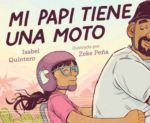
Cuando Daisy Ramona recorre su barrio en motocicleta con su papi, ve a la gente y los lugares que siempre ha conocido. También ve a una comunidad que está cambiando rápidamente a su alrededor. Pero mientras el sol azul púrpura y dorado se va poniendo a sus espaldas, Daisy Ramona comprende que el amor que siente por su ciudad nunca cambiará. Con brillantes ilustraciones y un texto lleno de sentimiento, Mi papi tiene una motocicleta es un mensaje lleno de amor de una niña a su padre, esforzado trabajador, y a los recuerdos que todos guardamos de nuestro hogar a pesar de los cambios o la distancia.
Douglas, You’re A Genius!

Nancy and Douglas, determined to learn what is on the other side of a fence, try Nancy’s plans to launch, vault, and fly Douglas over, then succeed with Douglas’s simple idea.
Mango, Abuela, and Me
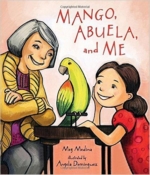
Mia’s abuela has left her sunny house with parrots and palm trees to live with Mia and her parents in the city. The night she arrives, Mia tries to share her favorite book with Abuela before they go to sleep and discovers that Abuela can’t read the words inside. So while they cook, Mia helps Abuela learn English (“Dough. Masa”), and Mia learns some Spanish too, but it’s still hard for Abuela to learn the words she needs to tell Mia all her stories.
Kiki Koki

The story of a fun-loving Taino Indian boy who must learn the value of loyalty and hard work.
Green Is A Chile Pepper
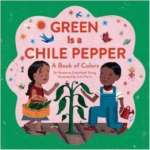
Children discover a world of colors all around them: red is spices and swirling skirts, yellow is masa, tortillas, and sweet corn cake. Many of the featured objects are Latino in origin, and all are universal in appeal. With rich, boisterous illustrations, a fun-to-read rhyming text, and an informative glossary, this playful concept book will reinforce the colors found in every child’s day.
There’s a Name for This Feeling
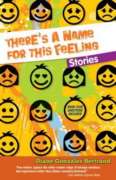
In the title story, Lucinda hatches a clever plan to get her boyfriend back and is crushed when she ultimately realizes that it’s impossible to force a guy to love you. Like all young people, she ignores the advice of her mom and learns that lesson and many more the hard way.
Cuento Del Ratoncito Zapata Y El Rey Chimuelo
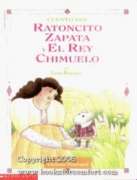
The little mouse Zapata learns from Lupita that children put their teeth at the head of the bed or under the pillow in exchange for coins. Since that time he goes around looking for teeth for the unhappy toothless king.
Amadito And The Hero Children
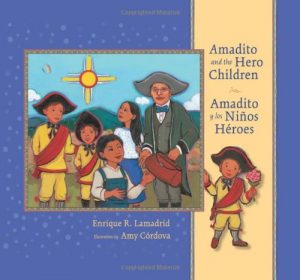 A brief fictional recounting of legendary epidemics that struck the American Southwest–the smallpox epidemics of the eighteenth and nineteenth centuries and the influenza epidemic during World War I–which ravaged many rural communities throughout the West. Includes author’s notes about the characters.
A brief fictional recounting of legendary epidemics that struck the American Southwest–the smallpox epidemics of the eighteenth and nineteenth centuries and the influenza epidemic during World War I–which ravaged many rural communities throughout the West. Includes author’s notes about the characters.
